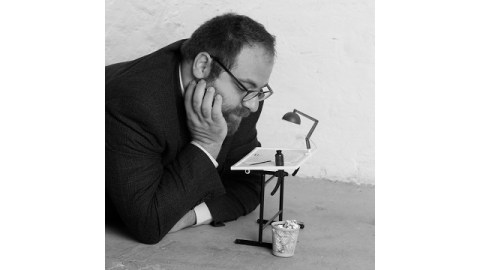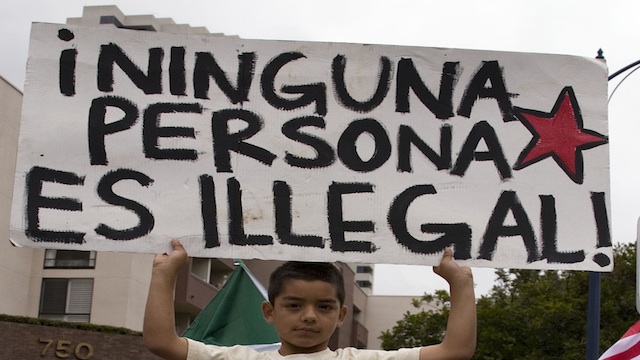How to Unleash Your Inner Cartoonist

We all draw as kids, yet most of us stop drawing somewhere around the fourth or fifth grade. Doodles seem unserious by then, and adulthood only makes us less likely to draw. Ivan Brunetti’s Cartooning: Philosophy and Practice might be the way to rediscover, if not your “inner child,” perhaps your “inner cartoonist.” “This ‘classroom in a book,’” Brunetti (shown above) explains, “provides the aspiring cartoonist with a practical means for creative self-discovery and the exploration of complex ideas through the iconic visual language of comics.” Cartooning may be the medium, but self-discovery and self-exploration is the message.
Cartooning: Philosophy and Practice recreates the class Brunetti has taught at the University of Chicago and Columbia College Chicago. Those familiar with the New Yorker, the New York Times Magazine, and McSweeney’s will spot Brunetti’s style in an instant. But even those who’ve never seen his work will ease into Brunetti’s easy manner and humorous prose style quickly. “Considering that all human effort could perhaps be an Ozymandian folly,” he writes in the introduction, “the search for meaning, catharsis, and dignity in the humble act of cartooning may seem an especially delusional quest.” With that anti-beginning, Brunetti proceeds to lead you on a quixotic quest of self-examination through a 15-week program culminating in a finished 4-page project of your own design.
“The goal of this course is to fuse elements of both writing and drawing into another form altogether: cartooning,” Brunetti explains. What’s required? “Paper, pencil, life,” Brunetti responds concisely. At $13, Brunetti’s book is dirt cheap, but the real investment on your part comes in the form of time and a willingness to open up parts of yourself perhaps left behind in the fourth or fifth grade. (Some tools of the trade are helpful, of course, and Brunetti provides a good beginner’s guide to the cartoonist’s world of special pens, brushes, and papers.) Brunetti describes the first two thirds of the course as a “cartooning boot camp” in which the essentials of the craft are learned before he sets you free to develop your final project putting those skills into practice. A video of some of the exercises and assignments can be seen here. One of my favorite exercises involved reimagining an entire book as a single-panel cartoon. Boiling down J.D. Salinger’s The Catcher in the Rye to a few images and a muttered final “Phonies,” Brunetti displays the wit and visual-linguistic skill of a master editor.
What I appreciated most about Cartooning is the pitch-perfect balance between philosophy and practice, between theory and actually putting pencil or pen to paper. “It is the pencil that teaches best,” Brunetti believes, “and anyway, the trees of theory can obscure the forest of practice. I would go so far as to say that practice is philosophy, for practice itself encompasses philosophy, and philosophy without practice is shallow indeed.” Brunetti’s not kidding when he calls his course a boot camp. Anyone who has tried their hand at books such as Kimon Nicolaïdes’The Natural Way to Draw or Betty Edwards’ Drawing on the Right Side of the Brain knows that dabblers only get so far (and not very far at that). Although not technically a drawing book, Brunetti’s book belongs in that same category in that only the fullest commitment will bring the fullest reward.
Part of that reward is learning more about yourself. Quoting fellow cartoonist Chris Ware’s belief that comics are “dreaming on paper,” Brunetti asserts that “[e]very character in your dream is basically… you. Or an extension of you. The dream is all about you, its unconscious author.” Rather than view autobiography and fiction as a “dichotomy,” Brunetti calls them “a polarity, a continual tug and pull that can never be precisely pinned down and measured.” Brunetti dedicates Cartooning to the memory of Charles M. Schultz, creator of Peanuts. David Michaelis’ book Schulz and Peanuts: A Biography (which I reviewed here) clinically examined the psychological roots of Schulz’s art, right down to the real little red-haired girl. I came away from reading that book knowing a more about Schulz, but in another sense knowing nothing more in that his life had been laid bare years before in his cartooning. Not everyone can be Charles Schulz or Ivan Brunetti, but if you give your time and best efforts to the program laid out in Cartooning: Philosophy and Practice, you might be more of yourself.
[Image:Ivan Brunetti (author photo featuring miniature desk). Photo credit: Kurt Lauer Photography.]
[Many thanks to Yale University Press for providing me with the image above and a review copy of Ivan Brunetti’s Cartooning: Philosophy and Practice.]





